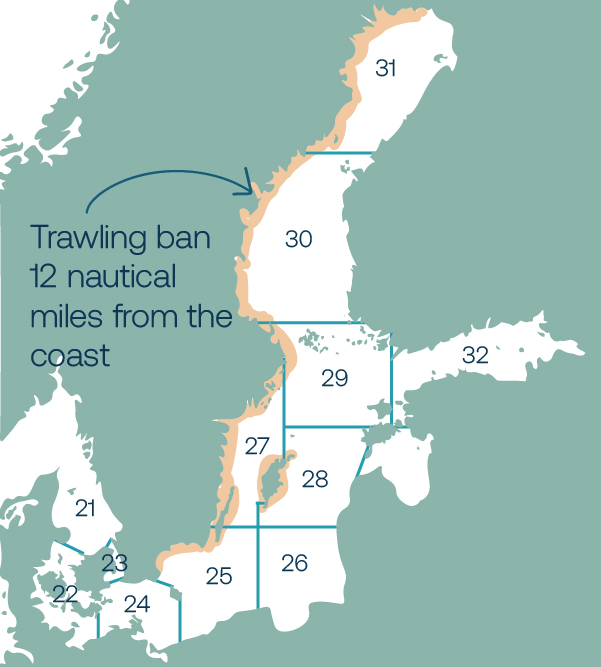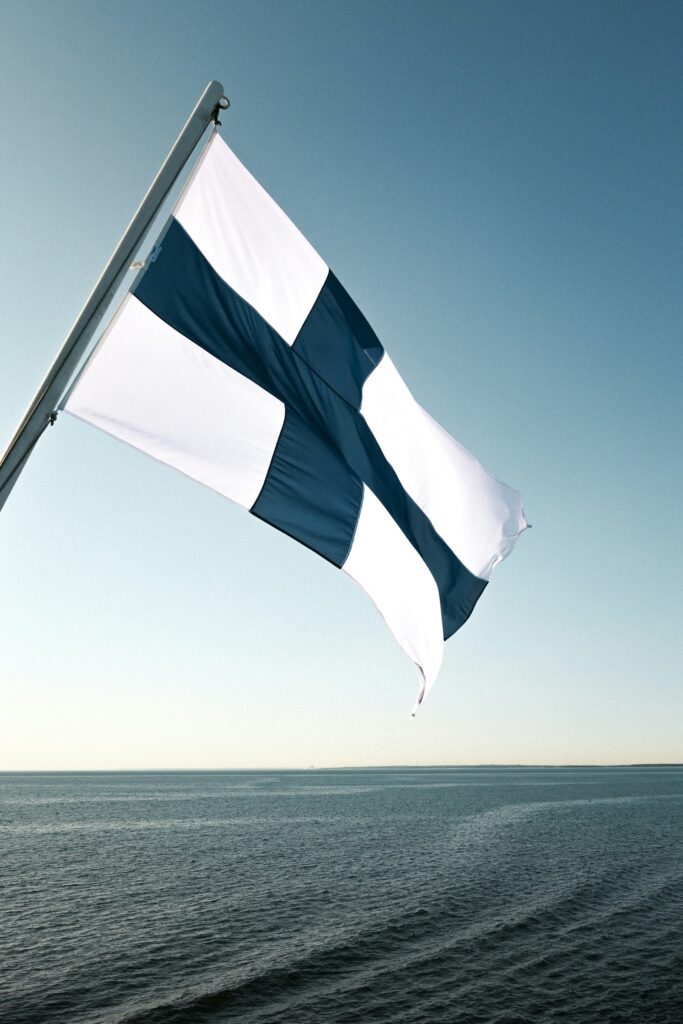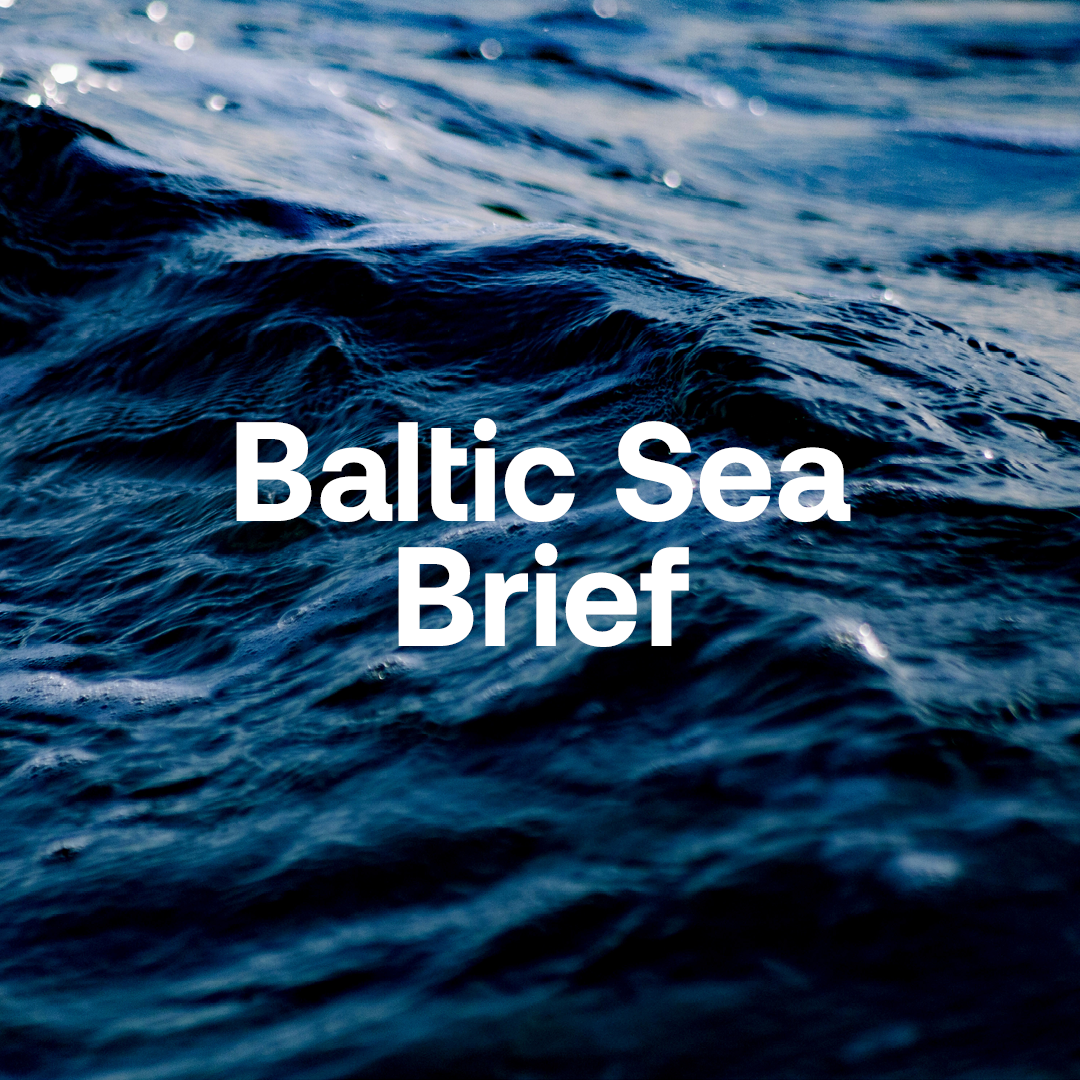While alarming reports and crises often dominate the news about the Baltic Sea and its fish stocks, there are also encouraging signs of progress. As summer approaches, BalticWaters takes a moment to spotlight five hopeful developments from the first half of 2025 that offer reason for optimism.

Trawling has been banned out to 12 nautical miles from the coast in parts of the central Baltic Sea
In February, trawling was banned on a trial basis in parts of the central Baltic Sea, out to 12 nautical miles from the coast. This means that trawling for herring and sprat, among other species, is prohibited within this area from northern Öland up to the border with the Bothnian Sea. The ban will remain in place until April 2027, when the it will be evaluated.
The extended trawling ban may help to protect sub populations of herring and sprat and provide new knowledge about the effects of trawling bans. However, a full-scale extension of the trawling ban along the entire east coast, which is something that the Government Offices and the Swedish Agency for Marine and Water Management are currently looking into, is preferable. Hopefully, this will be implemented in the near future, but it is still unclear when this might happen. Regardless, it is positive that the trawling ban has now been moved in parts of the Baltic Sea, albeit on a trial basis.


Swedish law has been changed to make it possible to restrict bottom trawling in certain marine protected areas
In early April, the Swedish Parliament approved the government’s proposal to make it possible to ban bottom trawling in marine protected areas within the coastal area where trawling is banned. In practice, the proposal means that the legal scope will be expanded so that bottom trawling can be restricted to a greater extent than previously in marine national parks, nature reserves, biotope protection areas, or Natura 2000 areas located within the coastal area where trawling is banned. The legislative changes will enter into force on July 1.
BalticWaters believes that bottom trawling in marine protected areas within the coastal area where trawling is banned should have been prohibited even before the legislative proposal was presented. After all, we are talking about protected areas within the area where trawling should not be allowed. However, due to exemptions granted over the years, trawling has still been possible.
The new decision, which makes it possible to restrict bottom trawling to a greater extent than before, unfortunately includes possibilities for exemptions. This is not good enough. Research shows that bottom trawling has major negative effects on the seabed and the species that live there. Allowing exceptions to the ban on bottom trawling is therefore detrimental to the protection of the marine environment.
It remains to be seen how the new legislation will be applied and what effects it may have, and what types of exemptions will be granted. However, it is nevertheless positive that the proposal has been adopted, even if a more ambitious proposal would have been preferable.

Finland is approaching Sweden in terms of Baltic Sea fisheries, but much work remains to be done

Finland is an important partner for Sweden when it comes to Baltic Sea fisheries. Together, our countries are allowed to fish 75 percent of the total herring quota in the Baltic Sea, excluding the stock in the Gulf of Riga. A common position on fisheries and fishing quotas can therefore be of great importance. BalticWaters has raised this perspective several times with politicians and officials working with fisheries, and progress has been made during the spring.
In May, Swedish and Finnish researchers and officials met to discuss the state of knowledge regarding herring in the Gulf of Bothnia. We need to see more of these initiatives in order to achieve long-term sustainable fisheries management.
A series of meetings between officials and responsible politicians should also be initiated and prioritized. An important issue is the possibility of agreeing on a common vision for the Baltic Sea and fisheries—how should stocks be recovered and how much do we want to be able to fish in 30 years? Given that there is agreement on the vision, the path to get there must also be decided — we do not have time to wait.
Why is BalticWaters working for sustainable fisheries in the Baltic Sea?
We are often asked why we work for sustainable fisheries in the Baltic Sea. The answer is simple: large-scale fishing has a significant negative impact on the marine environment. Reducing or prohibiting large-scale fishing would likely yield results relatively quickly. The “only” thing required is for our politicians to make the necessary decisions.
In addition to high fishing pressure, the Baltic Sea is threatened by eutrophication and other forms of pollution. Alongside reducing fishing pressure, we also need to address these issues. BalticWaters is working on these challenges too, but it often takes a long time before any results become visible. That is why BalticWaters works tirelessly to ensure that fisheries in the Baltic Sea become sustainable in the long term.

Dioxins and PCBs in herring along the Svealand coast have decreased
On behalf of the County Administrative Board, the Swedish Environmental Research Institute IVL has conducted a study of dioxin and PCB levels in herring along the Svealand coast, from Gräsö in the north to Oxelösund in the south. The results were presented in a report that was released during the spring. This is good news for the possibility of increasing the proportion of catches for human consumption. PCB and dioxin levels have decreased by around 30 percent since 2019.
According to the report, there are geographical differences in the levels measured. Levels are particularly low in the southern parts of the Svealand coast. There is still reason to be cautious about eating herring if you are pregnant or breastfeeding, but as a healthy adult who does not belong to any risk group, it is fine to eat herring several times a year.

The EU has presented an Ocean Pact including a special Baltic Sea section
During the spring, there have been further positive developments. One of these is the European Ocean Pact, which was presented in early June. The pact includes a separate section on the Baltic Sea, which is identified as an urgent priority sea basin. The aim of the Ocean Pact is to streamline and coordinate maritime policy through a range of measures to protect and restore the marine environment. So far, the Ocean Pact lacks legally binding measures, but the European Commission has announced that a legislative proposal will be presented in 2027 – an Ocan Act. As usual, we are waiting for the results before we can draw any conclusions about whether the pact is a victory or a flop.


The Brief in Short
Fisheries and fisheries policy in the Baltic Sea is not all about bad news. Sometimes hopeful events occur. During the first half of 2025, we have received several pieces of positive news: the trawling ban has been extended in parts of the Baltic Sea, Swedish law has been canged so that bottom trawling in certain marine protected areas can be restricted to a greater extent than before, Sweden and Finland have begun to move closer one another on the issue of herring fisheries in the Bothnian Sea, levels of environmental toxins in herring have decreased along the Svealand coast, and the EU has presented an Ocean Pact. With these hopeful news, BalticWaters wishes you a pleasant summer!

